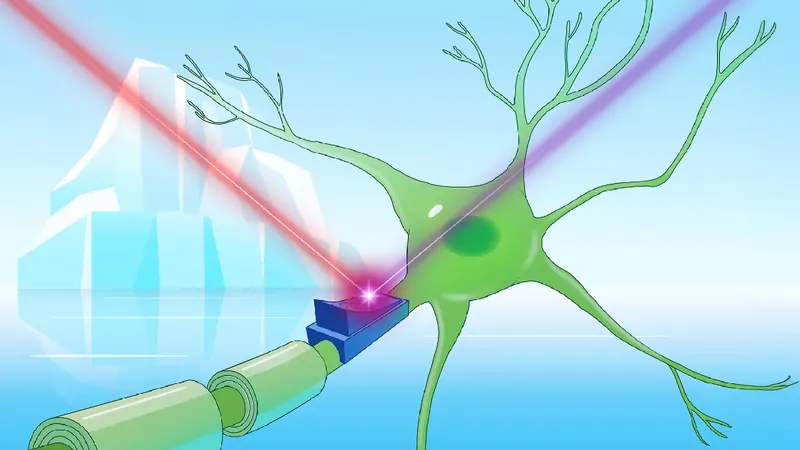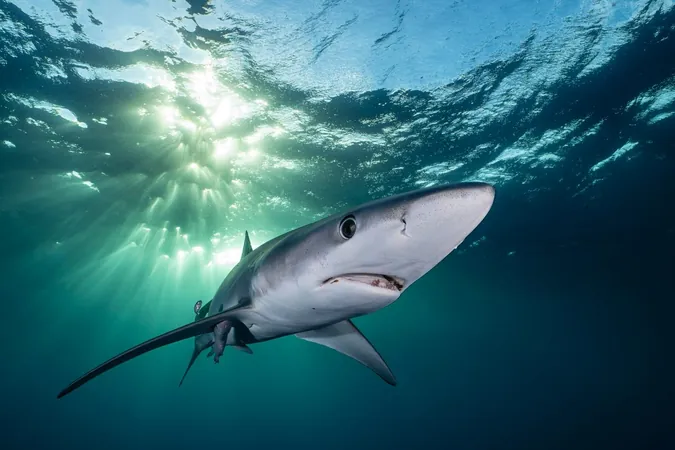
Unlocking the Secrets of Light: How Cold-Climate Microbes are Poised to Transform Neuroscience
2025-07-05
Author: Siti
Revolutionizing Neuroscience with Arctic Microbes
In an exciting twist for neuroscience, physicist Kovalev, from EMBL Hamburg, is diving deep into the world of rhodopsins—brilliantly colored proteins that empower aquatic microbes to harness sunlight. This innovative approach could redefine how we manipulate brain activity.
The Hidden Power of Cryorhodopsins
Kovalev’s fascination with rhodopsins led him to a groundbreaking discovery: a hidden group of these proteins, dubbed 'cryorhodopsins', originating from extreme cold environments like glaciers. While rhodopsins are commonly associated with warmer waters, these frosty versions have evolved unique properties crucial for survival in harsh conditions.
A Colorful Surprise
Each rhodopsin's allure lies in its color, which dictates how it interacts with light. Most are pink-orange, but Kovalev’s cryorhodopsins showcased a stunning array of colors, including unexpected blue hues. This diversity opens doors for precise neuronal control in experimental settings.
Transforming Neuroscience with Optogenetics
What makes these cryorhodopsins particularly exciting is their potential in optogenetics—a technique allowing scientists to control neurons with light. Early experiments showed that exposing brain cells to UV light generated electric currents, with varying colors of light affecting cell excitability in distinct ways. The implications are enormous, particularly for developing advanced cochlear implants aimed at restoring hearing.
Nature’s UV Sentinel
But that's not all. Kovalev and his collaborators discovered that cryorhodopsins may function as UV light sensors, providing bacteria with a survival advantage in environments saturated with harmful radiation. This ability could enhance how we understand microbial adaptations and light sensitivity.
Overcoming Scientific Hurdles
Delving into cryorhodopsins has not been without challenges. Their near-identical structures mean that even a tiny atomic shift can yield vastly different properties. Kovalev leveraged cutting-edge techniques, such as 4D structural biology, to unveil these microscopic details. The result? A deeper understanding of how these proteins can be harnessed in future applications.
A New Era of Discovery
The potential of cryorhodopsins extends far beyond the lab. As Kovalev emphasizes, these discoveries underscore the importance of scientific expeditions to remote regions, where unique adaptations can reveal new mechanisms of life. The investigation into these microbes not only enriches our knowledge of biology but also paves the way for innovative technologies that could transform medicine. The future of neuroscience is bright—and it’s illuminated by the icy glow of cryorhodopsins.


 Brasil (PT)
Brasil (PT)
 Canada (EN)
Canada (EN)
 Chile (ES)
Chile (ES)
 Česko (CS)
Česko (CS)
 대한민국 (KO)
대한민국 (KO)
 España (ES)
España (ES)
 France (FR)
France (FR)
 Hong Kong (EN)
Hong Kong (EN)
 Italia (IT)
Italia (IT)
 日本 (JA)
日本 (JA)
 Magyarország (HU)
Magyarország (HU)
 Norge (NO)
Norge (NO)
 Polska (PL)
Polska (PL)
 Schweiz (DE)
Schweiz (DE)
 Singapore (EN)
Singapore (EN)
 Sverige (SV)
Sverige (SV)
 Suomi (FI)
Suomi (FI)
 Türkiye (TR)
Türkiye (TR)
 الإمارات العربية المتحدة (AR)
الإمارات العربية المتحدة (AR)